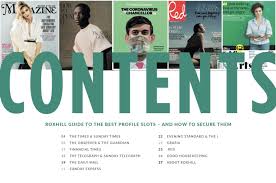The Influence of Social Media’s Evolution on Modern Society
The Impact of Social Media on Society
Social media has become an integral part of modern society, revolutionising the way we communicate, connect, and share information. Platforms such as Facebook, Twitter, Instagram, and LinkedIn have transformed how we interact with one another and the world around us.
One of the key impacts of social media is its ability to facilitate instant communication on a global scale. People can now connect with friends, family, and colleagues from anywhere in the world at any time. This has led to a more interconnected society where information can be shared rapidly and widely.
Social media has also played a significant role in shaping public discourse and opinion. Issues and events can quickly gain traction and visibility through social media platforms, allowing for greater awareness and discussion. This has empowered individuals to voice their opinions, advocate for causes, and hold institutions accountable.
However, the impact of social media is not without its challenges. Concerns have been raised about issues such as online privacy, cyberbullying, misinformation, and the spread of fake news. The addictive nature of social media has also raised questions about its impact on mental health and well-being.
Despite these challenges, social media continues to evolve and shape our society in profound ways. It has become a powerful tool for businesses to reach their target audience, for activists to mobilise support for their causes, and for individuals to express themselves creatively.
In conclusion, social media has had a transformative impact on society by enabling global communication, shaping public discourse, and empowering individuals. As we navigate the opportunities and challenges presented by social media, it is essential to harness its potential for positive change while addressing its drawbacks responsibly.
Five Essential Tips for a Positive and Secure Social Media Experience
- Be mindful of the information you share online to protect your privacy.
- Engage with others by commenting, liking, and sharing content that interests you.
- Follow accounts that inspire and motivate you for a positive social media experience.
- Take breaks from social media to avoid feeling overwhelmed or consumed by it.
- Think before you post to ensure your words and actions reflect your values and beliefs.
Be mindful of the information you share online to protect your privacy.
It is crucial to be mindful of the information you share online in order to safeguard your privacy. With the widespread use of social media platforms, personal data can easily be accessed and potentially misused. By being cautious about the details you disclose online, such as personal contact information or sensitive data, you can better protect yourself from privacy breaches and potential risks associated with sharing too much information on social media.
Engage with others by commenting, liking, and sharing content that interests you.
Engaging with others on social media by commenting, liking, and sharing content that interests you is a great way to build meaningful connections and foster a sense of community online. By actively participating in conversations, showing appreciation for others’ posts, and sharing valuable content, you not only contribute to the online dialogue but also create opportunities to connect with like-minded individuals and expand your network. This interactive approach not only enhances your social media experience but also helps in building relationships and increasing visibility within your online community.
Follow accounts that inspire and motivate you for a positive social media experience.
Following accounts that inspire and motivate you is a valuable tip for cultivating a positive social media experience. By curating your feed with content that uplifts and empowers you, you can create a digital environment that fosters positivity and personal growth. Inspirational accounts can offer encouragement, motivation, and fresh perspectives, helping you stay inspired and focused on your goals. Surrounding yourself with uplifting content can contribute to a more fulfilling online experience and enhance your overall well-being.
Take breaks from social media to avoid feeling overwhelmed or consumed by it.
Taking breaks from social media is crucial in maintaining a healthy balance and avoiding feeling overwhelmed or consumed by it. Stepping away from the constant stream of information and notifications allows you to recharge, refocus, and reconnect with the present moment. By taking time offline, you can reduce stress, improve mental well-being, and gain perspective on your online interactions. Remember, it’s essential to prioritise self-care and set boundaries with social media to ensure a positive and sustainable relationship with these platforms.
Think before you post to ensure your words and actions reflect your values and beliefs.
It is crucial to exercise caution and mindfulness before posting on social media to ensure that our words and actions align with our values and beliefs. By taking a moment to reflect on the content we share, we can uphold our integrity, maintain authenticity, and contribute positively to the online community. Thinking before posting allows us to promote respect, empathy, and understanding in our interactions, fostering a more constructive and harmonious social media environment.





